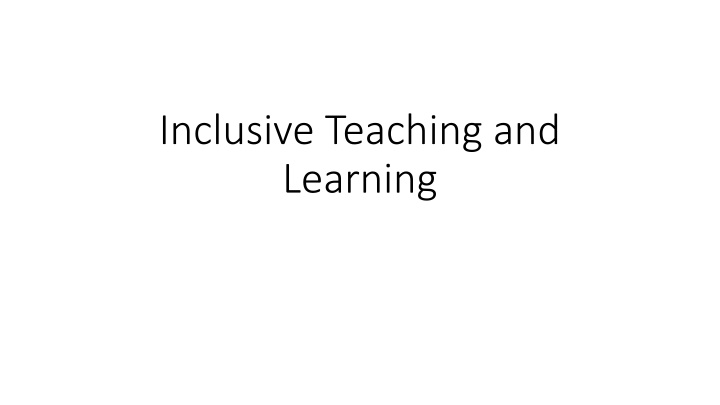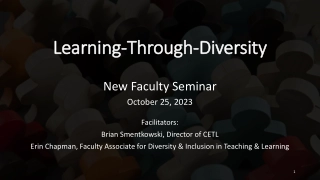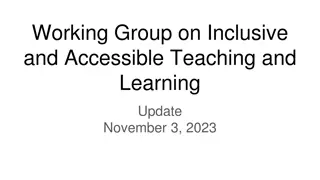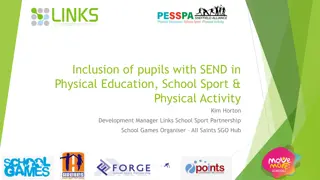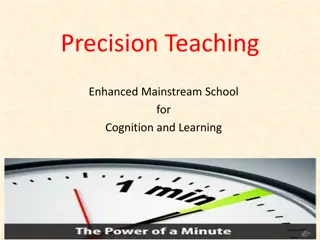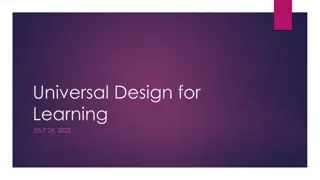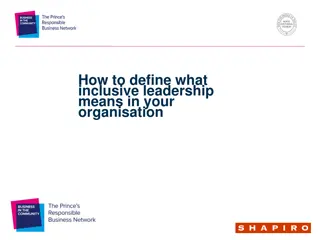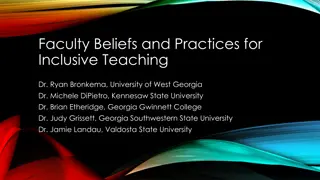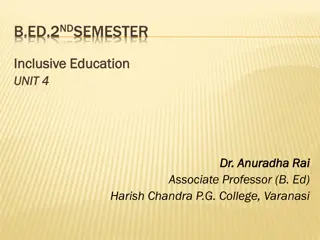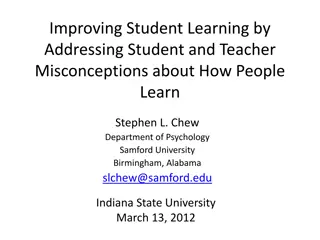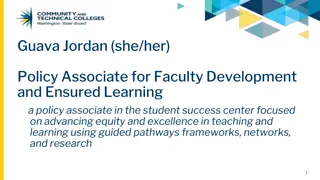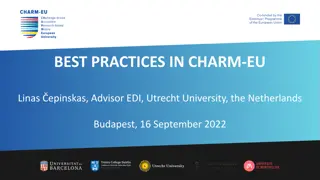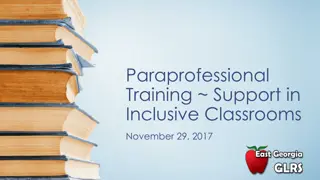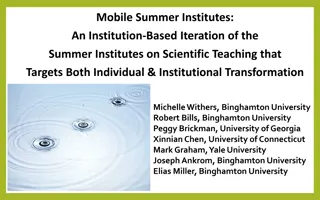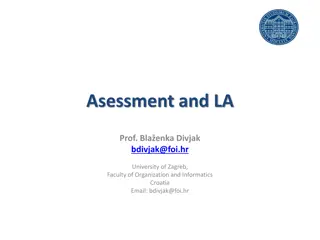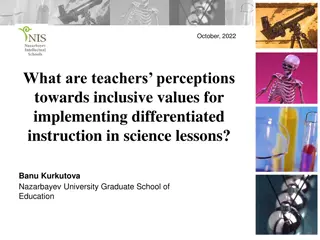Implementing Inclusive Teaching and Learning Approach
The inclusive teaching and learning approach focuses on involving students completely in the teaching and learning process, which goes beyond mere social inclusion. By planning units, assessing student readiness, and implementing engaging instructional strategies, educators can ensure authentic performance and deep understanding among students. This approach emphasizes authentic performance, diagnostic assessments, and engaging instructional methods like hands-on experiences and scaffolding. By following these principles, educators can create a truly inclusive learning environment.
Download Presentation

Please find below an Image/Link to download the presentation.
The content on the website is provided AS IS for your information and personal use only. It may not be sold, licensed, or shared on other websites without obtaining consent from the author.If you encounter any issues during the download, it is possible that the publisher has removed the file from their server.
You are allowed to download the files provided on this website for personal or commercial use, subject to the condition that they are used lawfully. All files are the property of their respective owners.
The content on the website is provided AS IS for your information and personal use only. It may not be sold, licensed, or shared on other websites without obtaining consent from the author.
E N D
Presentation Transcript
Inclusive Teaching and Learning
The approach The approach is based on the assumption that no complete inclusion occurs unless students are totally involved in the process of teaching and learning. In other words, any inclusion that excludes teaching and learning is nothing more than bare social inclusion. The implementation of the approach requires many other ideas and support we can get from various researchers. We borrow the general pattern of teaching and suggestions from Wiggins and McTighe Understanding by Design, namely:
1. Plan the Unit after having established the authentic performance you want your student to achieve. In order to do this: decide what knowledge, skills, attitudes, and deep understanding you want the student to achieve remember the skills should be the same across the subject content to attain the continuous practice of competence remember the Deep understanding is the answer to an Essential Question. [According to Carol Tomlinson, deep understanding is what every student should achieve, as explained in: Wiggins and McTighe (2013), Essential questioning. Alexandria, VA: ASCD].
Authentic performance The authentic performance , as a student s learning achievement, should be experienced hands-on by the teacher first, who needs to plan all the requirements in terms of: knowledge skills attitudes challenges of the task.
2. The diagnostic assessment is meant to assess the readiness of the student in terms of: Prior knowledge Experience connected to the topic or the subject matter Vocabulary of the student Interest in learning Student profile: cognitive and learning styles
3a. The instruction is implemented through many learning experiences . For this to occur keep in mind the following components and principles: Introducing the general objective of the Unit and the specific objective of the day Keeping students active (engaging them in their own learning: working alone, in random pairs, in cooperative learning activities etc.) Involving students in various ways Practicing: hands-on experiences Presenting worked-out examples
3b. Scaffolding Questioning Semantic mapping Summarising Proceeding in small steps Paying attention to the skills and attitudes involved in the activities Every learning experience must be assessed through Formative Assessment
4. Assessment after instruction A time at the end of the instruction devoted to the recall and control of the Unit content, before moving to authentic performance. The teacher controls the student preparation for the task through: Integration of knowledge Mastered skills Discussion about the deep understanding for successful transfer
5. The same task is assigned to all students. Scaffolding: students with difficulties can get a variety of supports that allow them to accomplish the task. All students get the analytic-generic rubric on the competence and must hand the task and the self-evaluation grid to the teacher.
6. Learning after summative assessment Students get the exemplary task prepared by the teacher and confront their own performance with the exemplary one. They then reflect on their own strengths and weaknesses and answer the following question: What do I have to do to accomplish a better task?
References G. Wiggins & McTighe (1998). Understanding by design. Alexandria, VA: ASCD. G. Wiggins & McTighe (2013). Essential questioning. Alexandria, VA: ASCD. C. Tomlinson (2006). Integrating differentiated instruction & Understanding by Design. Alexandria, VA ASCD. C. Tomlinson & M.B. Imbeau (2010 ). Leading and managing a differentiated classroom. Alexandria, VA: ASCD C. Tomlinson (2013). Assessment and student success in a differentiated classroom. Alexandria, VA: ASCD C. Tomlinson & M.B. Imbeau (2013). Differentiated instruction. An integration and practice. In B.J. Irby, G. Brown, R. Lara- Alecio, & S. Jackson (Eds.). The handbook of educational theories. Alexandria, VA: ASCD. D. Wiliam, & S. Leahy (2015). Embedding formative assessment. West Palm Beach, FL: LearningScienceInternational. P.J. Black, & D. Wiliam (2009). Developing the theory of formative assessment. Educational Assessment Evaluation and Accountability. 21(19), 5-31. P.J. Black, & D. Wiliam (2009). Developing the theory of formative assessment. Educational Assessment Evaluation and Accountability. 21(19), 5-31. B. Rosenshine, & C. Meister (1992). The use of scaffolds for teaching higher-level cognitive strategies. Educational Leadership, 49(7), 26-33. B. Rosenshine, Principles of instruction. Research-based strategies that all teachers should know , in American Educator, 36/1 (2012), pp. 12-19 e 39.
